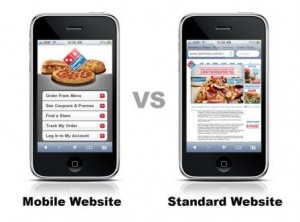has 13+ years experience in web development, ecommerce, and internet marketing. He has been actively involved in the internet marketing efforts of more then 100 websites in some of the most competitive industries online. John comes up with truly off the wall ideas, and has pioneered some completely unique marketing methods and campaigns. John is active in every single aspect of the work we do: link sourcing, website analytics, conversion optimization, PPC management, CMS, CRM, database management, hosting solutions, site optimization, social media, local search, content marketing. He is our conductor and idea man, and has a reputation of being a brutally honest straight shooter. He has been in the trenches directly and understands what motivates a site owner. His driven personality works to the client's benefit as his passion fuels his desire for your success. His aggressive approach is motivating, his intuition for internet marketing is fine tuned, and his knack for link building is unparalleled. He has been published in books, numerous international trade magazines, featured in the Wall Street Journal, sat on boards of trade associations, and has been a spokesperson for Fortune 100 corporations including MSN, Microsoft, EBay and Amazon at several internet marketing industry events. John is addicted to Peets coffee, loves travel and golf, and is a workaholic except on Sunday during Steelers games.
 The present trend is that of mobility and the same applies to computers as well and that is the reason why more and more people are opting for internet enabled smartphones as they help them stay connected even while on the move. However, this has posed a certain type of problem for websites and website developers as many of them are not mobile friendly and hence not accessible through the mobile. The inability of websites to connect with the customers through mobiles could mean a loss of customers, which no business can afford. Therefore, website owners and developers have to work towards creation of websites that are available for the mobiles as well.
The present trend is that of mobility and the same applies to computers as well and that is the reason why more and more people are opting for internet enabled smartphones as they help them stay connected even while on the move. However, this has posed a certain type of problem for websites and website developers as many of them are not mobile friendly and hence not accessible through the mobile. The inability of websites to connect with the customers through mobiles could mean a loss of customers, which no business can afford. Therefore, website owners and developers have to work towards creation of websites that are available for the mobiles as well.
However, the task of creating or building a mobile version of the website is not very difficult as there are several tools that ease the process of creating mobile versions of websites. Some of these tools are discussed below:
 Adwords by Google is a proven way to generate traffic, leads, and sales. It is a tool that some marketers are using on a regular basis to drive business goals. While there are a few using this tool to great effect, several more are striking out and in the process, throwing a lot of money out the window. Having success with Adwords calls for you to take the same approach you take to generating visibility for your organic content — optimize. However, the actual steps to optimization are a bit different in this arena.
Adwords by Google is a proven way to generate traffic, leads, and sales. It is a tool that some marketers are using on a regular basis to drive business goals. While there are a few using this tool to great effect, several more are striking out and in the process, throwing a lot of money out the window. Having success with Adwords calls for you to take the same approach you take to generating visibility for your organic content — optimize. However, the actual steps to optimization are a bit different in this arena.
1. Learn to Bid and Budget
Understanding how to bid and budget your funds is crucial to Adwords success. Spending $20 a day may appear to be the way to go for cost-conscious advertisers, but a budget that low will also limit your ability to profit. Likewise, bidding low initially can save you some money, but it might not get you very many clicks. While you don’t want to spend beyond the budget, you also don’t want to limit your potential, so learning how to manage your funds in accordance to the ad platform is key.
January 2013 – Last spring Google posted about Responsive Web Design on their official webmaster central blog and though the flavor of their article was fairly mild, they made it very clear that their “commitment to accessibility” includes a very important message to web designers – “Mark up one set of content, making it viewable on any device.”
 Mobile technology is changing business faster than the Internet did at the time of its birth. The web opened opportunities for all businesses and even created a few new ones, but with the speed in which consumers are adopting mobile technology the impact on almost every industry is going to be profound. So with apps for just about everything where are the SEO tools? Sure customers are searching from their phones, their tablets and theirTricorders or whatever but as a search engine optimization professional what mobile tools are available to us? It would seem there are plenty.
Mobile technology is changing business faster than the Internet did at the time of its birth. The web opened opportunities for all businesses and even created a few new ones, but with the speed in which consumers are adopting mobile technology the impact on almost every industry is going to be profound. So with apps for just about everything where are the SEO tools? Sure customers are searching from their phones, their tablets and theirTricorders or whatever but as a search engine optimization professional what mobile tools are available to us? It would seem there are plenty.
Here are three qualitySEO tools available now for Android users that will help any webmaster keep up with his or her online business on the road or in the yard. Not all of us are road warriors after all but it’s still important to keep our finger on the pulse of our business while hanging out next to the pool.
 Aaron Wall of SEOBook recently predicted that, in 2013, SEOs who “remain overly-public will continue to invent language to serve their own commercial purposes while chastising those who do not fall in line.” I appear to be living up to (the first part) of that promise because I’m calling it: the breakthrough ranking factor of 2013 will be “waves,” a term I just made up.
Aaron Wall of SEOBook recently predicted that, in 2013, SEOs who “remain overly-public will continue to invent language to serve their own commercial purposes while chastising those who do not fall in line.” I appear to be living up to (the first part) of that promise because I’m calling it: the breakthrough ranking factor of 2013 will be “waves,” a term I just made up.
This will be a somewhat speculative post, so I feel compelled to say that these opinions are my own, and don’t necessarily reflect the opinions of Northcutt as a whole.
Where did this crazy idea come from? It started with the realization that, back in 2009, Google’s Chief Economist told McKinsey Quarterly “I keep saying the sexy job in the next ten years will be statisticians. People think I’m joking, but who would’ve guessed that computer engineers would’ve been the sexy job of the 1990s?”
Part II in this series covered the importance of the roles of testing and modification in the development of successful conversion optimization. Now we will attempt to make sense of what we convert.
 I remember a very energetic web guy back in the dot.com glory days who pitched us on his money-making system with the declaration, “He who has the most data wins!”
I remember a very energetic web guy back in the dot.com glory days who pitched us on his money-making system with the declaration, “He who has the most data wins!”
I must admit, I thought that was pretty cool and used it myself a time or two to impress people. But experience has shown me that quality data is really the key, because today we can measure things to the point of becoming overwhelmed.
Metrics are everywhere. Just watch a sports show on TV and you’ll see how every aspect of player performance has some sort of statistic. And if you have ever witnessed a presentation of data in a meeting you have probably also witnessed eyes glazing over and slow little pools of dribble accumulating out of the mouths of those present. Try and avoid that.
Quality data starts with the basics first:
Once you have these core metrics you can compare them based on historical data over time and then you’ve got half the battle won already. But there is more to know. And the more you immerse yourself in simple data, the easier it becomes to start to peel out more granular information that turns into actionable data, such as:
In Part I of this series, we examined what to measure, The Funnel, and landing pages. In Part II we will put this preparation into action.
 After all the effort people put into setting up programs and campaigns, nothing amazes us more than how seldom site owners or managers check to actually see if their whole process works. Emailed form results that disappear into cyber oblivion, missing images, or simple broken links are among the most common things we witness.
After all the effort people put into setting up programs and campaigns, nothing amazes us more than how seldom site owners or managers check to actually see if their whole process works. Emailed form results that disappear into cyber oblivion, missing images, or simple broken links are among the most common things we witness.
But these mistakes can be far worse.
I recall a client coming to us several years ago with a very nice healthcare supplement website he just had built. It was well designed and e-commerce equipped and he had product ready for fulfillment. He asked us to see if we could strengthen some of the marketing copy on his order pages as his orders just seemed to be “way down.”
We dove in to take a look. The site was organized and some of his product names were very clever. After spooling through several categories and pages, we decided to see how easy his purchase process was. And we liked his site so well, we thought, What the heck, even if we end up buying something just to test it out, it’s worth it. Some of us could certainly use that Ear Nibbler Female Pheromone! We zeroed in the product, chose our quantity, resisted the add-ons and upsell items, broke out the credit card, armed ourselves for purchase, and hit BUY NOW.
Only to stare in disbelief as an error page came up. FAIL.
Can you imagine? All the time and money that went into gathering that sale ended in error. And he didn’t just have one page like that, he had many. Needless to say, all the slick copy in the world wasn’t going to improve his sales. But the larger point is, while we’re not saying you have to be perfect, if you don’t test to see if your setup works, all you’re setting yourself up for is failure.
Think of it like this: You’re trying to track a long-distance runner during a race, but you stop clocking him before he finishes.
 So…what was his final time and finish position? Before you high five all of your colleagues and look back with pride on the fact that you had a runner, realize that with true conversion optimization, you should not only know what the finish order was, you should even be capable of measuring whether your runner slowed down for water along the way.
So…what was his final time and finish position? Before you high five all of your colleagues and look back with pride on the fact that you had a runner, realize that with true conversion optimization, you should not only know what the finish order was, you should even be capable of measuring whether your runner slowed down for water along the way.
While this may seem obvious, in nearly every conversion optimization instance we’ve examined, site owners or managers had either no idea what to measure or were trying to assess only half of what was truly measurable.
Before you begin, make sure you are prepared. When it comes to leads, there can be many, many steps along the sales cycle before you have cash in your hand.

Nowadays, many people are using Pinterest to as a tool for promoting their ecommerce businesses. What makes Pinterest ideal for ecommerce is that it is a social media platform which is primarily visual. Since many people use photos to market their products, Pinterest offers a place where they can pin, link and share their photos. Using different pin boards, one can easily highlight different items. In addition, you can also post photos of future sales and products.
The following are some guidelines for using Pinterest for ecommerce.
1. Appear professional
Make sure your Pinterest account looks as professional as possible. Customize your profile page, arrange your pin boards appropriately and use unique and catchy board covers. Do your best to make your account stand out from others in your niche.
2. Include Pinterest widgets in your product pages
Having Pinterest widgets in your product pages will enable people to easily share your products. Whenever an image is repinned, it will still have a link to your product page, as well as your Pinterest profile. This will result in an increase of traffic to your ecommerce site.
 Blogging has become second nature to many people, and they are reaping the rewards. Business owners in any industry should learn how they could benefit from blogging. I have been blogging for the past 5+ years. You can check out all my ramblings about PPC here.
Blogging has become second nature to many people, and they are reaping the rewards. Business owners in any industry should learn how they could benefit from blogging. I have been blogging for the past 5+ years. You can check out all my ramblings about PPC here.
How businesses can benefit from blogging is by reaching and remaining on the first page of search engines. For instance; a garden/landscaping business has started a website with their products and services but have very little web traffic. It is not because they do not have good products or services, it is because they are not appearing on the first or second page when potential customers are searching for products they carry. The best step management can take at this point is to begin posting regularly (or hire someone to do it) with information about the gardening and landscaping industry.
Blogging is not meant to be blatant sales pitches; it is meant for informative, valuable content for the consumer. If each post is simply a picture of a product with a “the best there is” tag on it, website traffic will drop instead of rise. When the consumer sees something of value to them that they do not have to pay for (information in this case) they will tell their peers and share it on social networking sites.
Businesses can benefit from blogging by giving consumers free advice and ideas on how to use their products. In the gardening industry there are millions of products available so content should not have to be repeated. A top business blogger can easily pick one item per day to write about. In staying with the gardening theme the items and tips should be related to the season. This type of approach will keep consumers returning to the site on a regular basis to learn something new. As time goes on, the blog subscriber may become a regular customer as well.